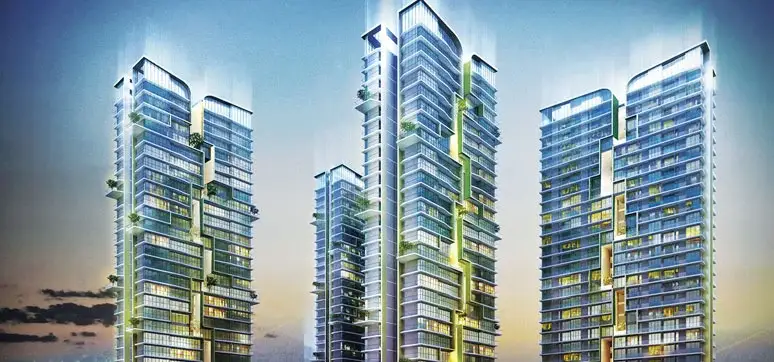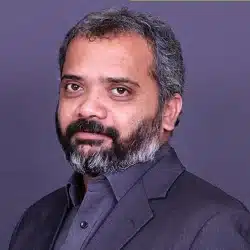An architect with over 18 years of experience, Ar. Nilesh Dongre has been leading the Developer Spaces Vertical at Edifice Consultants Pvt. Ltd. (ECPL) for the better part of the decade. Handson and detail oriented, Nilesh specialises in the design and execution of large-scale corporate buildings and complexes. With his architectural expertise and a keen understanding of commercial viability of built environments, Nilesh’s projects consistently exceed performance and sustainability benchmarks and actualising their commercial potential.
A part of ECPL for over a decade, he has been instrumental to the growth of the organization, especially with his work on award-winning projects such as Tata Tritvam at Kochi, the Ascendas-V Park redevelopment at Hyderabad, Incor One City at Hyderabad, the Samsara Residential Township at Vijaywada, and the World Trade Centre Development at Abuja, Nigeria. His projects, such as the Ascendas Campus at IT Park, Bengaluru, have further received widespread coverage in national media for their ‘green’ features.
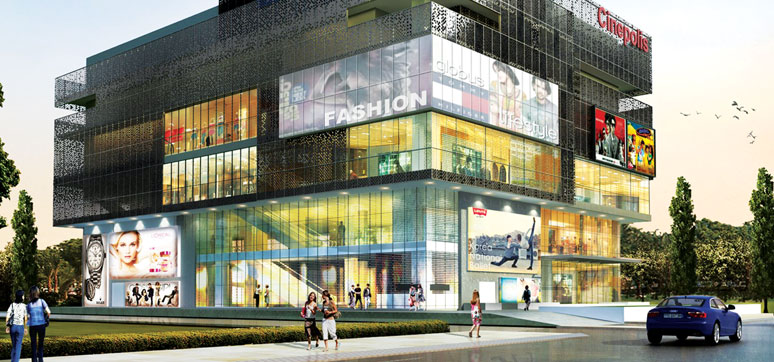
WFM had a long and candid conversation with Ar. Nilesh Dongre about his projects, vision, inspirations and more. Here are excerpts of the interview.
Please tell us about your practice and your ongoing projects?
Ar. Nilesh Dongre (ND): Edifice Consultants Pvt. Ltd. is one of India’s premiere design consultancies. Founded in 1989 by Ravi Sarangan and Sanjay Srinivasan, it emerged out of a desire to practice architecture by questioning norms and encouraging collaboration and contribution. Today, 28 years and more than 1200 projects later, we are one of the largest design practices in the country.
Envisaged as a collaborative, integrated practice, Edifice has as many design philosophies as it has designers – sensitivity being the common quality underpinning this diversity of thought and approach. Utilsing design as a tool to optimise and transform the built environment, we have tried through each of our projects to move beyond mere green certifications and achieve inherent sustainability in terms of context, culture as well as climate.

While we handle projects of varied scale and scope – from interior design to architecture and urban design, across diverse typologies – we have striven to keep our idealism untarnished through them all.
Presently, we are working on multiple projects for Tata Consultancy Services, IT Parks for Ascendas, Bhartiya City and Syntel – which range from master planning and architecture to workspace interiors as well as housing projects for Tata Housing Development Company and the Vatika Group. In the institutional realm, we have recently completed work on the Headquarters for the Insurance Regulatory and Development Authority (IRDA) in Hyderabad, and are currently working on the Atal Akshaya Urja Bhavan for the Ministry of New and Renewable Energy. We are also looking forward to the completion of our three hospital campuses for AIIMS in Guntur, Nagpur and Kalyani (W.B.).

What inspired you to become an architect?
As a student, I didn’t initially plan on pursuing architecture – I was far more inclined towards engineering; iconic structures appealed to me immensely, and I was interested in exploring the role that engineering played in creating these marvels. However, while I was in college, I came across an article in a newspaper – Times of India, if I remember correctly – which spoke about Charles Correa and Le Corbusier.
Reading about these maestros was a pivotal moment for me; as I dug deeper and learn more about the far-reaching impact architecture can have on all facets of life – and the all-encompassing, immersive quality that it possesses – I became increasingly interested in this career path. This was the beginning of my foray into architecture.
Could you please talk about a few of your projects featuring innovative façade and fenestration design?
Façade design encompasses a vast range of issues. Broadly speaking, a building façade is the interface between a structure and the user and casts an indelible visual impression. The façade must correspond to the requirements of the client, the vision of the architect, as well as demands of iconicity – or, in some cases, the need to blend in – for the building.
One such project of ours – where the façade design complemented and reinforced the design intent – is Syntel Global Development Centre in Chennai. The building footprint of each block assumed the shape of a pod with elliptical courtyards, into which the main office spaces opened. The façade in this case, adapted to the shape of the building and emphasised its scale. Stone and glass were used in conjunction with Aluminium Composite Panels, to highlight the edges and form overhangs; the latter in particular, shaded the façade glazing and reduced heat gain.
The overall effect is very striking, with alternating stone bands on the building façade creating an iconic visual and highlighting the dynamic form of the structure with their uninterrupted lines. Another such project is Tata Consultancy Services (TCS) Synergy Park in Hyderabad. This particular project consists of three phases, each with their specific design brief and corresponding occupancy requirements. For TCS – particularly in Phase 2 – we developed a high-density built format that consisted of several interlocking floorplates arranged in a lattice-like pattern, creating multiple shaded courtyards and terraces within.
Given the porous character of the built-mass, we designed a façade that would wrap around the form to create a cohesive whole. In this case, the façade was an architectural aid of sorts, representing the design intent in its truest form.The third project is a Multitenanted building at International Tech Park (ITPB), Whitefield in Bengaluru. Developed for Ascendas, this MTB (Multi Tenanted Building) stands in a 9-acre campus, in a vicinity that houses several other commercial buildings of this kind – given this context, we wanted to develop a design schematic that would challenge the conception of typical IT buildings, and create a façade that would not only be cost-effective and energy-efficient, but also capable of asserting a distinct visual identity for itself.
With coloured fritt-glass and a modular approach to fenestration, we created staggered bands of glazing that wrapped around the floor plates; the result has been both attractive and effective, with high saleability across all floor plates due to the consistent ingress of daylight and a playful external appearance that heightens the imageability of the development.

Façades and cladding industry in India has gone through a sea change in the past decade. Tell us about the latest façade & cladding material and technologies available in Indian market and those used in your projects?
The key drivers of design innovation are visibility, sustainability and materiality – façade design in India is evolving by leaps and bounds on all three fronts.

One example of such technological interventions would be media walls and visual surfaces that are overtaking business districts and commercial centres. In our own project Ramanujan I.T. City in Chennai, media walls are serving as an urban icon for the campus. An extension of this feature, which is also gaining favour with designers and clients, are interactive façades – media walls that are contextually sensitive and offer a dynamic and engaging experience to the user are no longer limited to the Times Squares of the world!
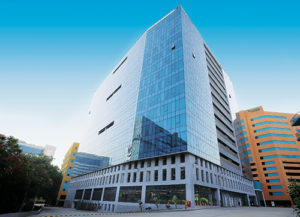
An increasing sensitivity towards environmental sustainability is also responsible for the increased use of electromagnetic glass façades, which change visual transmission to turn semi-opaque from a clear state. These aid go greatly with interior lighting regulation, and help maintain privacy as well.
Other important developments include the optimization of commonly used materials – ten years ago, glass, stone and aluminium constituted the limited choice of material for façade systems, but now the palette has been diversified through diligent R&D. Back-painted glass and acidtreated glass are particularly in vogue, and so is polyester powdercoated aluminium cladding.
Enamelled glass and fritt-patterned glass are also particularly popular entrants in the market; we’ve used them latter in Ascendas Victor to create a dynamic interior lighting experience. Fritt glass, in particular, provides the option of adding visual density and texture to typical full-glazing structures. The use of Zinc cladding and perforated metal screens in façades is also on the rise in the domestic market. From a technical perspective, we are also proponents of unitized glazing systems, which provide the largest scope of optimisation and quality control compared to their alternatives available in India today.

What are the key factors to consider while designing and installing façades & fenestration?
The first factor would be the design brief: buildings are the embodiments of our collective aspirations, and it is necessary that a façade – the ‘face’ of the building, essentially – represent and fulfil these aspirations as well. It is the architect’s duty to strike a balance between the client’s wishes and one’s own creative vision for the project, and the façade must reflect this delicate equilibrium. Whether it is a commercial building that must stand out in its neighbourhood to attract the right footfall or an institutional building that must assert its ethos and stature through its appearance – façade design goes a long way in creating the right image and impression.
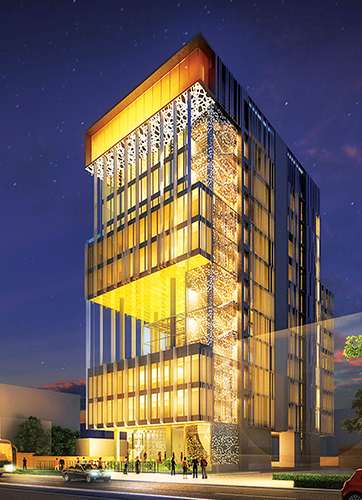
Equally important would be climate control: the façade must correspond to the configuration of the building, the local climatic conditions, and the expected usage patterns to ensure that postconstruction energy requirements are minimised. In particular, efficient building design should correspond to solar radiation typical to an area, and optimize daylighting and heat gain to the built environment.
The third factor is budget: the choice of material and technology for any façade system will greatly impact its cost of installation, upkeep and performance. Budgetary constraints need to be kept in mind while making these choices to ensure that a project is financially feasible not only during the stage of construction but also for the years of occupancy and usage to follow.
Lastly, façade systems – like all design choices – must be able to stand the test of time. It is imperative that the chosen façade strategy continue to fulfil its intended function and aid the design intent two, five, or even ten years down the line.
Please brief on the technical benefits of a well-managed façade and how it helps the building to be energy efficient at the same time provide better interior environment. A well-designed façade ensures optimal user experience. Especially in the context of India, façade strategies can help reduce dependence on mechanical means of climate control immensely, which is crucial for a tropical climate like ours. There has also been an increased effort 142, Rashbehari Avenue, Kolkata towards taking buildings ‘off.
the grid’ – by lowering energy requirements and managing essential demands through onsite solutions – and façade design is an important component of this strategy. Be it through the use of high performance glass or photovoltaic panels, façade design plays a large part in diminishing the carbon footprint of a building, which is the need of the hour.
A well-managed façade also contributes to sustainability – as well as public health – by facilitating a cleaner, healthier environment. The growing trend of installing green screens on building façades is geared towards this end, typically through growing plants and creepers on trellises which filter out dust and promote evaporative cooling.
Maintaining an optimal interior environment is also governed by façade design immensely. For example, in our project Ascendas Victor, we devised a modular façade strategy which utilised heat-strengthened DGU panels and fritt glass of 1050 mm width each, to achieve 35-37 per cent glazing – which is the optimal wall-window ratio. Paired with performance glass, this proportion of glazing ensures optimal diffused daylighting inside the building with minimal heat gain. With daylight penetration of upto 12-15 meters, the floorplates are uniformly lit from all sides, allowing for flexibility of function within. Being a multi-tenant building, leasability was a crucial factor for this project – given that the offices would be Built-To-Suit (BTS), it was important that the ingress of daylight be largely consistent across each floor and each office within. The design of the façade takes this into account and ensures a consistent wall-to-window ratio on each floor and across the grid. The use of blue-green laminated glass and orange fritt glass further reduces the glare inside the office space, creating an ambient glow. We not only managed to reduce the heat load of the building but also ensured a pleasant interior environ for the users regardless for the eventual interior design schematic of individual offices.
What are your views on future façades & fenestration technologies, and materials?
Façade Systems and strategies are ever-evolving – there is a lot of potential for growth in the sector, and each new day brings a new technology or innovation to the public eye. As we discussed before, building design can introduce texture and depth to a typically two-dimensional component, and I believe that the industry is also cognizant of this potential. Widespread use of 3-D printing, in particular, can revolutionize façade design – not only in terms of aesthetics but also through greater ease of assembly and installation. 3D printing also provides a scope for extreme scalability and appears to be the next big paradigm in façade, fenestration as well as building design.
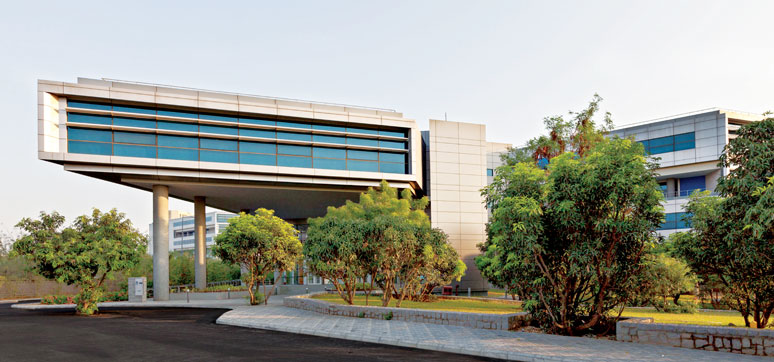
On the other end of the spectrum is the new technique of self-growing façades – algal or vegetative deposits that assume the form of the underlying ‘skeleton’, and envelope the building over time. Cost-effective and unique – and with a tremendous impact on aesthetics and quality of air – the technique promises to produce some very distinctive buildings in the near future.
There are many cladding materials available in the market. How do you choose the apt one for your project? What are the criteria while choosing the façade/cladding material?
The right choice of cladding material can be made keeping in mind a few key factors:
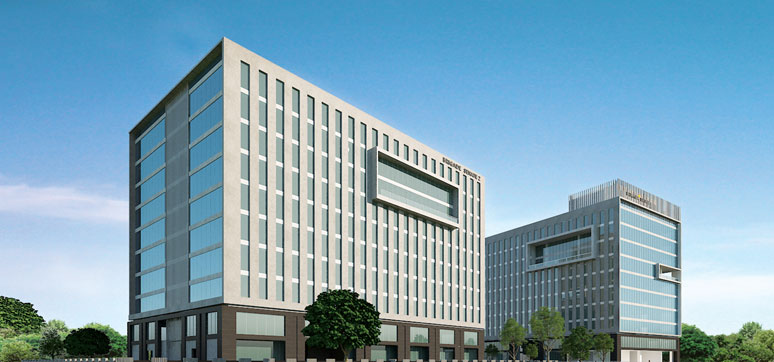
Its performance index:
especially for materials like glass, where optimizing ingress of daylight and cutting down solar glare must go hand in hand. Performance parameters must also address issues of safety in the case of hazards like fire.
Its longevity:
especially given the particular micro-climatic conditions of a place, as those impact the life-span of a material the most.
Its carbon footprint:
especially factoring in transportation and installation; as an example, we used stone sourced from local quarries for the façade building design of Syntel Global Development Centre, to ensure that the long-term ecological impact of the project.
Its reusability:
the choice of façade material should be made keeping the three R’s in mind – reduce, re-use and recycle. The environmental impact of construction processes can be reduced measurably if we restrict ourselves to materials which can be reused and repurposed efficiently.
What is your advice to young, aspiring architects?
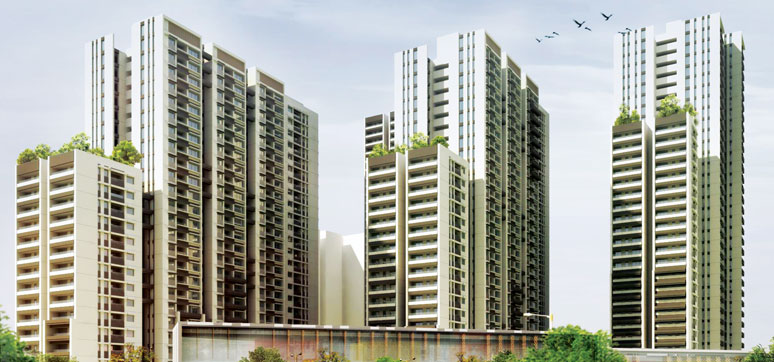
My only advice to young and aspiring architects would be to never lose sight of the big picture while designing. There is no dearth of choice in material and technology, and the wide selection available to us can be distracting. However, as the architect, the onus of determining relevance and applicability is always on you, regardless of what’s trending in the market. Trends change within days, but a well-designed building is timeless.
